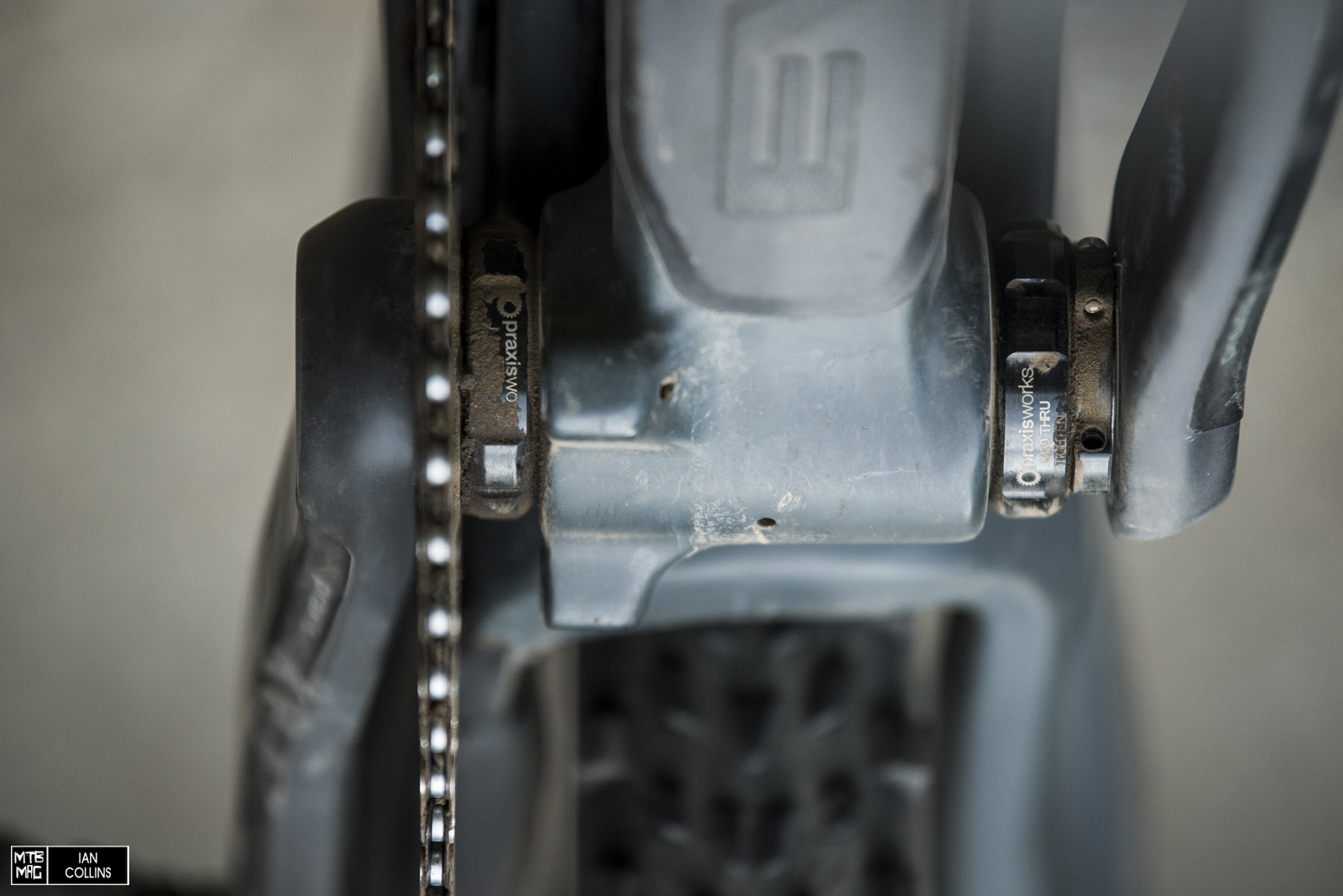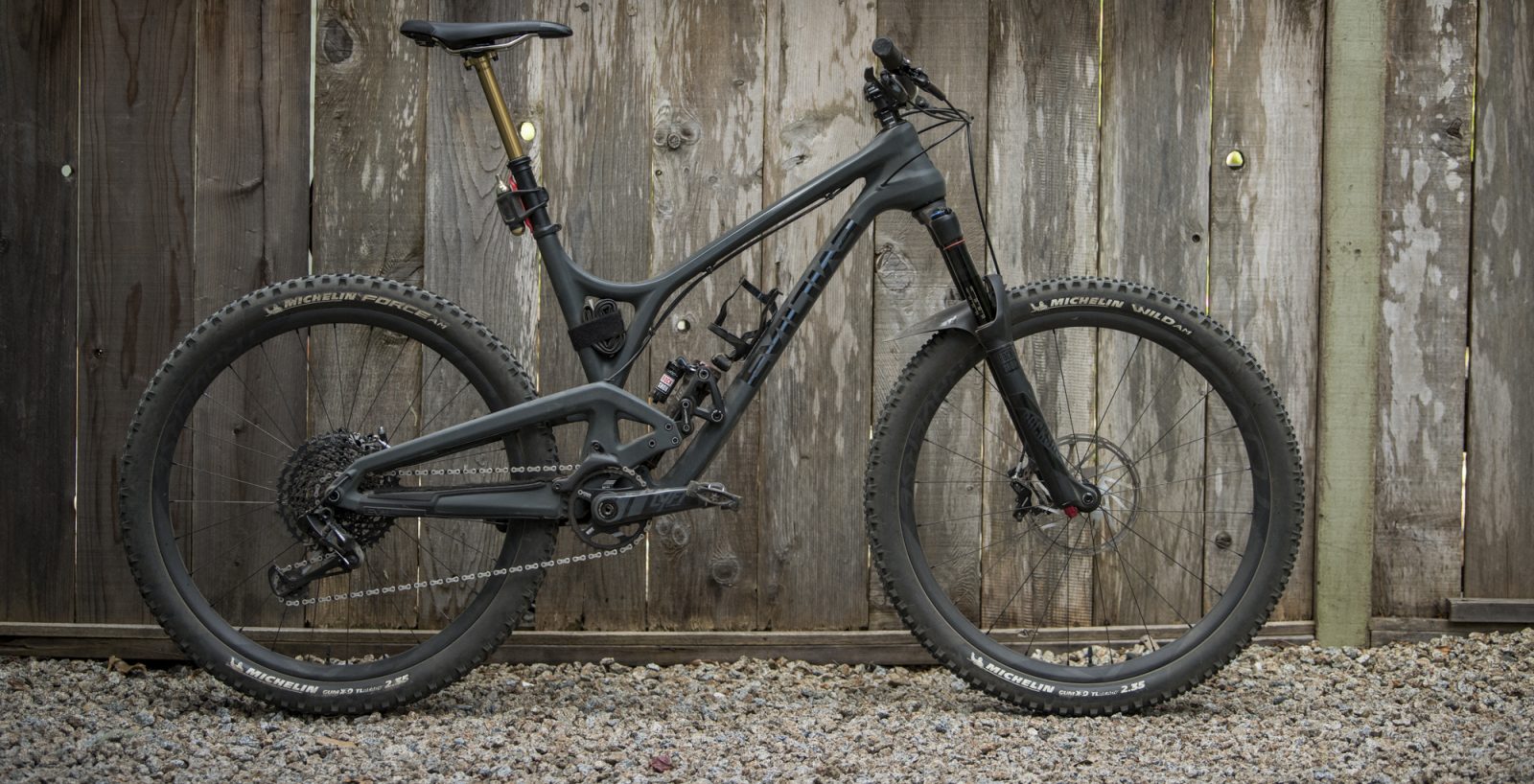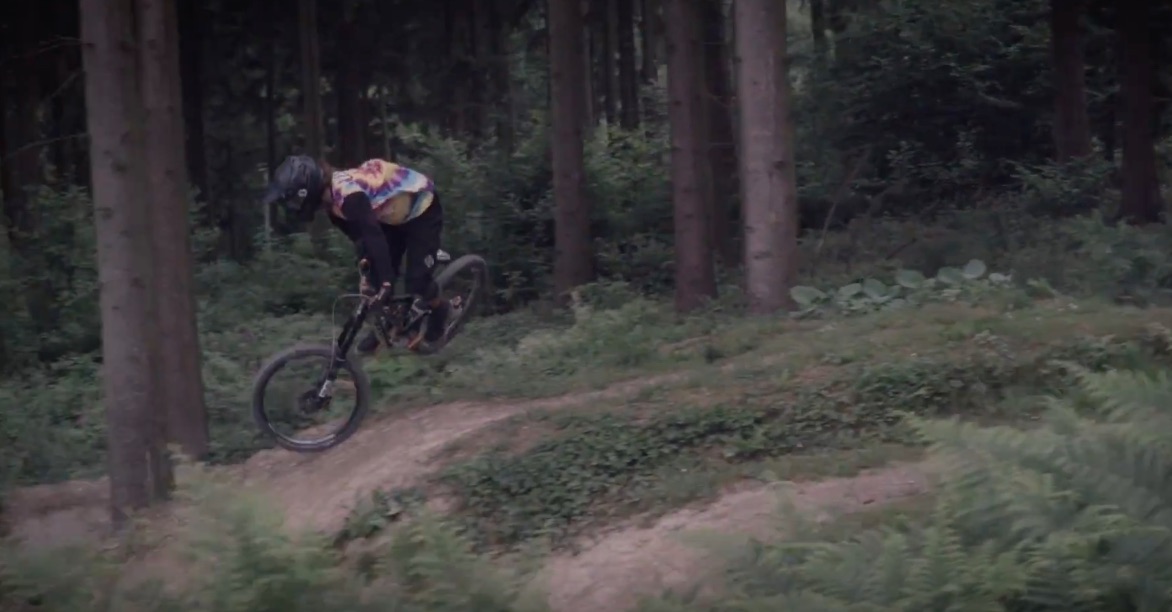We have to admit, when Evil Bikes first showed off the Calling, we thought it was a bit underwhelming and out of left field. With a knack for pioneering aggressive bikes, why would the Seattle brand dive into a more conservative field? Why not engineer a groundbreaking DH bike or a gnarly mid travel 29″ bike? You know…something that would fill the void between the Following and the Wreckoning. Why a 131mm travel, 27.5″ wheeled bike? Greatly impressed by Evil’s past efforts, we were still curious about the Calling as it seemed like it could address some minor gripes with past models: Boost spacing, a bottle cage mount, metric/trunnion rear shock, a stiffer layup etc…That said, to be completely frank, it still took a little bit of arm twisting from owner Kevin Walsh before we dove in and committed to some serious time on this bike. Both to his surprise and to his delight, over the past 6 months our tester’s mind truly changed; read on to find out why…

Details
• Rear Travel: 131mm
• Optimized Fork Travel: 140mm
• 73mm Threaded BB
• Maximum Rear Tire Size: 27.5 x 2.4 or 26+ x 2.8
• Single Ring Only
• Rear Wheel Spacing: 148mm x 12mm
• Post Mount rear brake /160mm standard (203mm rotor max)
• 30T-36T Chainring clearance
• Adjustable Head Tube Angle
• Integrated carbon fiber chain guide.

At the heart of it all is the DELTA suspension platform and its dual progressive leverage rate curve. The consistency in suspension feel across the entire line of the Evil Bikes lineup is quite impressive, but not as impressive as the actual suspension itself. Light off the top, supportive yet somehow freakishly supple in the middle, and providing a nice ramp at the end, DELTA is easily one of the best suspension platforms in mountain biking. One feature that is fully unique to DELTA is that you can adjust your bike’s geometry independently of its suspension. This is accomplished by flipping the swappable tabs in the rear end. They link to two little dogbones that connect the rear end to the bell crank linkage that drives the rear shock.

Up front, the tapered head tube can be adjusted by +/- 1º & +/-2º with a set of FSA’s nifty headset cups. In this review, we found the stock head angle to be spot on, so we didn’t really dabble with trying other cups. That said, if this bike interests you, but your daily trails are rather conservative, you could always slap the +1º cups in and have somewhat less aggressive geometry.

The porting for the internal cable routing has been cleaned up with the Calling. Also the rubber grommet at the seat stay (which prevents chatter) is now glued into the frame. The dropper post routing is fully internal, while the rear brake and shifter cable are mostly external, with the shifter running internally through the seat stay.


All Evil bikes feature an integrated carbon fiber upper chain guide. The threaded BB features a custom ISCG mount with two of the three mounting holes. Should you decide to put a guide on, you can use the custom E.13 Evil option, or get crazy with a hacksaw and DIY mod the lower half of pretty much any other ISCG05 guide on the market.

Much like all of the other bikes from Evil, there are custom molded rubber protective sheaths on the rear end and the down tube to silence chain slap and protect from rock strikes respectively. We went a bit over the top with quieting things and added some velcro on top of the chain stay as you can see above, right.

The RockShox Super Deluxe is one of the best air shocks we’ve ever used. One of our gripes with the Following was its tiny little inline shock, which had a tendency to get a bit overwhelmed. The Calling addresses that issue and then some with a lower leverage rate, increased air volume and overall size thanks to Metric spacing. Oh, it also has reservoir, something we applaud on any bike that’s going to see some rowdy riding. Like every other Evil, this bike features a built in sag indicator, making it much easier to measure out that 30% number, should you choose to swap to a different brand of shock. Lastly, as the trunnion mounts roll on cartridge bearings as opposed to a DU bushing in the upper shock eyelet, things got even smoother.
Geometry
It should come as no surprise that in a word, we’d describe the Calling’s geometry “aggressive”. Compared to some 160mm travel bikes, the numbers don’t look all that wild, but considering this is what most would consider an “all mountain” or “trail” bike, the angles and proportions are far from run of the mill. In short, the bike is long up front, short out back, SUPER low and quite slack. Anyhow, let’s see how those numbers worked out in the real world…


On the Trail
Without much thought, we set our front suspension (a 140mm travel RockShox Pike) up at 20% sag. Out back, we set the Super Deluxe to 30% sag. Our bike shipped with 1 bottomless token in the shock and we depending on terrain, we frequently bounced between 1 and 2 tokens. We really liked that on super rough trails we could set the bike up slightly softer and more linear (read: 1 token) but on poppy, buff, flowy trials we’d run it a touch firmer and more progressive (read: 2 tokens).
Right out of the gate we were blown away by the stiffness of this machine. We’re quire sure it even outshines the Insurgent, its 151mm travel big brother. This could be due to Boost spacing, the new layup or a combination of the two factors, but the bottom line is that this bike was begging for it like no bike in its category should. Combine the rigid chassis and brilliant layup with extremely well thought out numbers and you have a bike that corners like it’s absolutely on rails.

The Calling is a bit longer in reach compared to both the Following and to the Insurgent, and we applaud that. Our lanky, 6 foot tall tester was surprised that he needed to opt for a 40mm stem on his size large; it was his first foray with a stem under 50mm and he was loving it. Although the 66.4º head angle seems quite slack in the world of “all mountain” or “trail” bikes, where a 68º bike could be considered “aggressive”, we found the Calling to be freakishly spry and snappy. Put it this way, at no point in time did we wish for a steeper head angle and we thought the 42mm offset proved to be just right.

Speaking of head angle, this brings us to an interesting point. We felt that with a 140mm fork in the “low” position (as opposed to “extra low”) the bike was flawlessly spot on. In fact, we didn’t think it was all that advantageous to run the bike in “extra low”. We actually think Evil almost took it too far this time. While it wasn’t necessarily the slack 65.8º head angle that put us off, the BB approached being unmanageably low – at least with 175mm cranks anyway. Perhaps with 165mm or 170mm cranks, the extra low setting might have been more practical on certain trails. While we praise Evil for offering adjustable geometry, we think they could have lured in a broader range of riders with an ever so slightly slightly higher BB overall. Regardless, they most certainly hit the mark with the “low” setting and it’s hard to criticize them for offering adjustable geometry; something we’d like to see from more brands in general…cough cough…Giant, Specialized…cough cough…

Touching on specifics such as braking and pedaling, the Calling is extremely neutral. Under heavy braking, the suspension remains open and active. In terms of pedaling from a kinematic standpoint, we felt no bob or feedback, but could feel a very noticeable, firm platform to push off of. For most climbs we used the “trail mode” setting on the 3-position lockout to strike a nice balanced of stiffening things up while still still taking advantage of added traction in the more technical sections. As far as body position is concerned, compared to both the Following and to the Insurgent, the effective seat tube angle is .5º steeper. In contrast with the Following, the reach is 18mm longer; both of these factors put the rider in a much better position for climbing and we felt that made a huge difference on the trail.
Overall
The way that this bike pops, dives and digs into a turn, then blasts out with freakish exit speed is truly inspiring. We can’t claim that we’ve ridden every “all mountain” or “trail” bike out there, but we are confident in hazarding a guess that the Calling is likely more comfortable in their air than anything else in its category. Speaking of the word “category”, this bike simply transcends them and blurs the lines. It would be unfair to box it in and marginalize it. Its suspension is truly incredible; feeling supportive on fun, slappy trails but willing to charge in over its head when things get gnarly, emulating a bike that has much more than 131mm of travel.
Add in the fact that it’s a much more competent climber than all of the other bikes in Evil’s lineup and you have an all rounder with a mean, aggressive nature. The physical updates (Boost/Metric/trunnion) that it sees over Evil’s other bikes certainly stack up, but we feel its further evolved geometry is equally deserving of the tip of a hat and the main reason it’s more well rounded. When reviewing bikes we have to remain objective, but this was far and away the most fun we’ve ever had riding a mid travel mountain bike. It’s quiet and composed but easily riled up and always looking for trouble.








